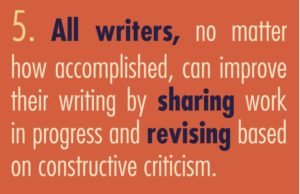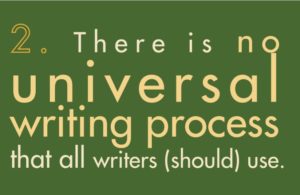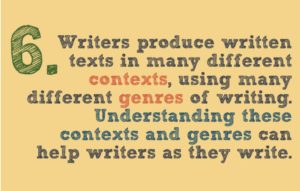Typically, a peer tutor in the Writing Center will come across many academic, research-driven assignments. On the other end of the spectrum lies creative works, such as fiction, memoir, screenplays, and poetry. Although these genres each have different techniques and conventions, they all fall under the umbrella of creative writing, and there are different ways in which peer writing tutors can help.
Why Creative Writing?
I chose to do my research on creative writing due to the fact that as a creative writing major, I felt as if I never was exposed to the Writing Center as a resource for my assignments. Additionally, there are so many creative fields students study that require writing to be done in. Although these are not research-based assignments, they can still stand to benefit from the review of another person. As our website boasts, “The UCWbL — we’re for everyone!” I wanted to make it clear that we are truly for everyone, and, through my research, I have found practices to help peer tutors navigate an appointment based on a creative work.

Preserving the Agency of the Writer
All work within the Writing Center focuses on the choices of the writer. As peer writing tutors, our job is to provide feedback and collaborate with the writer, not act as a Godsend with all the correct answers and ways of accomplishing things. Through my research, I found it is important to be subjective rather than objective. What this means is that you should focus on the subject (writer) and their goals for their piece, rather than the object (the piece itself).
Try to keep in mind Stephen North’s famous quote, “Our job is to produce better writers, not better writing.”
The Scaffolding Approach
Although there is no one way to properly revise and review a piece of writing, not every process is created equal.

Through my research, I have found that the scaffolding approach proposed by Puntambeker and Hübscher to be the most helpful in considering creative works. This approach is split into the following four steps:
- Intersubjectivity: collaborating with the writer to set shared goals for the session.
- Ongoing Diagnosis: continuing to check-in and adjust your goals throughout the session based on the writer’s current understanding and position on certain topics.
- Dialogic and Interactive: the conversation and communication that occurs throughout the appointment to reach the ongoing diagnosis.
- Fading: the writer learns or conceptualizes a concept and moves forward indepently.
While this approach was developed for more of a student/teacher relationship, I still believe this information can help peer tutors with a vague outline of what these appointments can look like.
The Big Five
If neither you nor the writer have any idea of where to start when reviewing a creative piece, keep in mind these following five items. These are all global issues that can radically change the nature of a piece, and these are found in any piece of creative writing, no matter the genre.
- Image
- Voice
- Character
- Setting
- Story
What If I Have an Unfamiliar Genre?

As a peer writing tutor, or just a person in general, you will most likely not know the specifics of every single genre of writing. For this reason, it is important to be transparent with the writer! Although this may be a creative genre you are unfamiliar with, it is not unlike any other Writing Center appointment. From my research (and personal experience), I have curated these five tips for when you are overwhelmed by an unfamiliar genre.
- Take a deep breath.
- Be transparent — ask the writer what they know.
- Keep the Big Five in mind.
- Use your past knowledge and experience!
- Consult any additional resources to help you.
That’s all I have for this post, but if you ever want help with creative writing, make sure to check out my handout and presentation that are both linked below!
Discover more from UCWbLing
Subscribe to get the latest posts sent to your email.

